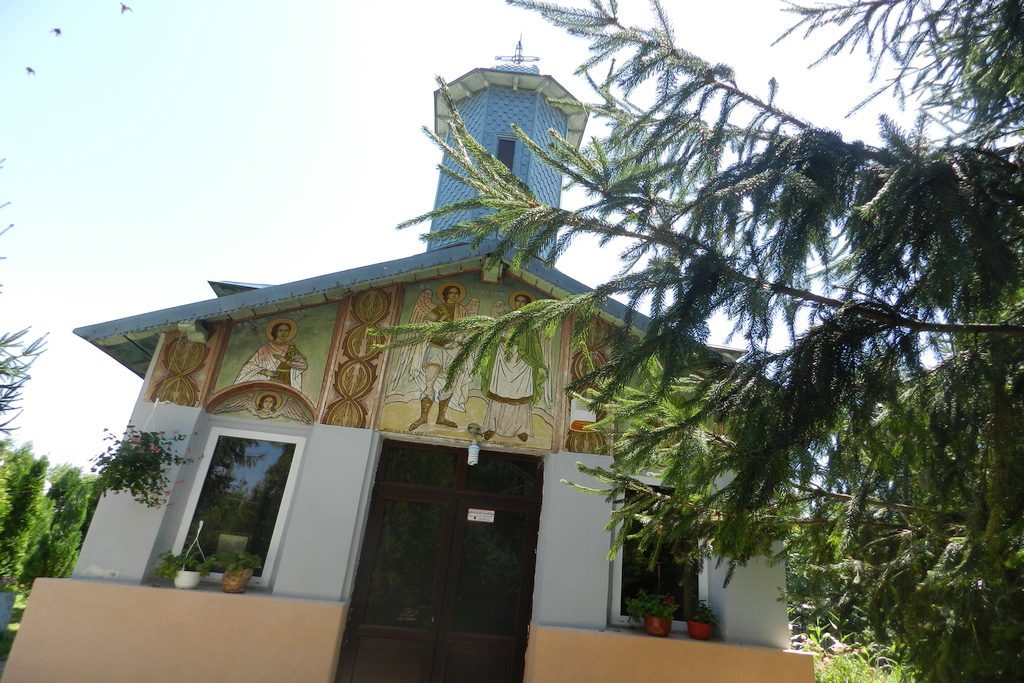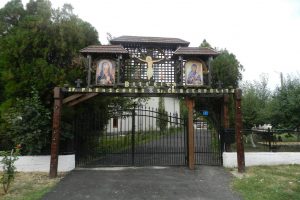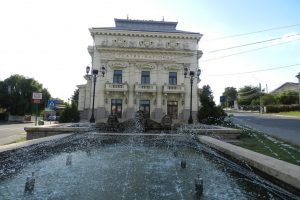

The church having the name „Adormirea Maicii Domnului“ from Draganesti-Olt dates from eighteenth century. According to the church historian, this church was built on the foundations of another ancient one around the year 1680, and between 1762-1764, the heir to village Drăgăneşti, Badea Ştirbei Drăgănescu, governor, lifted the masonry church “Adormirea Maicii Domnului”. The same source informs that the abode was in ruin, but between 1862-1864, the boyar Petrache Manolescu, together with Nae Stanescu, “turned the church”,meaning that a full recovery was done, including major architectural changes. According to the same document, it was repaired in 1914 after the earthquake of March 4, 1977. The iconostasis is carved from acacia wood, with icons painted on linden wood from 1864. Between 1979 to 1986, the church was completely rebuilt, including fresco painting. In 2000, started work on a comprehensive process of consolidation – restoration – expansion. Archaeological research of the Museum Câmpia Boianului led to the conclusion that in the second half of the first millennium, there have been on the current hearth of the city Drăgăneşti-Olt several small settlements, of the local people, who throughout the Middle Ages formed villages Peretu, Drăgăneşti and Comani. These villages were placed in clearings of old woods close to springs of fountains today. After the tenth century the population was grouped into three distinct centers that will make the villages Comani, Peretu (Uibăreşti) and Drăgăneşti-Olt. Near the church in the village center is located the town house and the school. In some villages the school functioned near the church or the town house. In Peretu, the school functioned at the beginning the house council which is near the church and much later in its own locations. The village, up to Cuza, when were elected mayors, was led by a chief magistrate who was alongsidewith the priest and swer of the commune. The priest and the chief magistrate were indebted to read and process the community publications, they also kept the town house box which contained the incomes of citizens. After 1845 the priest was appointed in the committee that reviewed the teens of 20 years for their contribution to the community. In each village was established a court of reconciliation made up of village priest and three jurors chosen by the people one from all three phases (leading, middle, tail). Court premises was at priest’s home. The reconciliation document was written by a priest and signed by the three jurors (also by putting fingers). Since in 1829 the priest kept track of population of the village. Monthly the bookkeeping was handed to the fee colector and further away to the Divan. In addition, the priest collected the revenue for equipping the church. In this way were organized the communities of villages Peretu, Drăgăneşti and Comani until 1860 when they became commons. Popular gatherings to constitute the Popular Council of the city Drăgăneşti-Olt began on 1 July 1968, when the commune became city Drăgăneşti.




